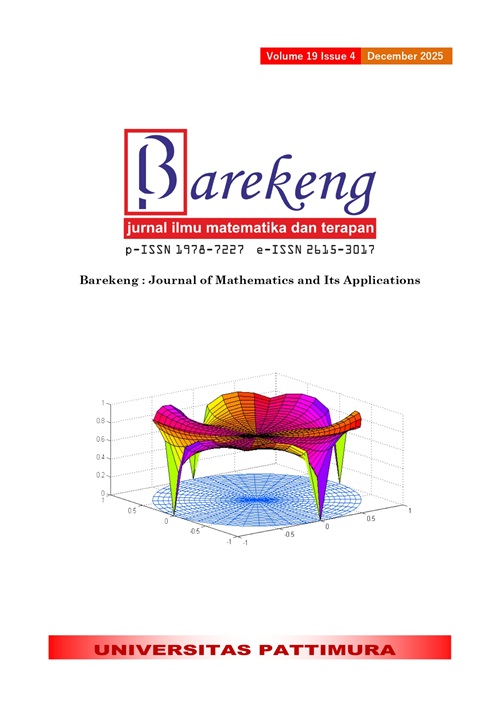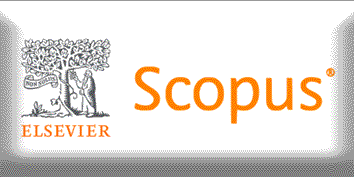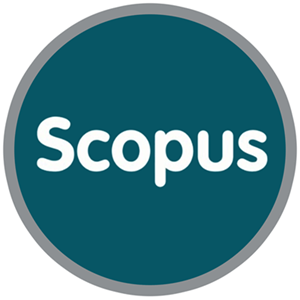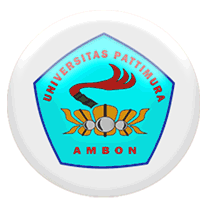LEVERAGING JAVANESE BATIK MOTIVES IN TEACHING NUMBER PATTERNS: THE PRELIMINARY PHASE IN ETHNO-REALISTIC MATHEMATICS EDUCATION APPROACH
Abstract
Traditional textiles, such as Javanese Batik in Indonesia, are not only cultural artifacts but also repositories of mathematical knowledge. While previous studies have explored the geometric transformations embedded in Batik motives, little attention has been paid to their numerical patterns and educational potential beyond geometry. Addressing this gap, the present study investigates the mathematical structures—particularly numerical patterns—and ethical values inherent in Javanese Batik motives. The novelty of this research lies in uncovering the integration of cultural heritage and mathematics through ethnomathematical analysis, which remains underexplored in existing literature. Utilizing an ethnographic approach, including literature review, documentation, and field observations, the study identifies recurring numerical patterns and embedded cultural philosophies within Batik designs. These findings reveal that Javanese Batik offers meaningful contexts not only for teaching mathematical concepts but also for fostering character education through values such as discipline, patience, and harmony. The results suggest that these motives can be transformed into culturally responsive teaching materials, particularly e-modules for learning numerical patterns. This study contributes to the broader field of mathematics education by demonstrating how local cultural artifacts can support cognitive and affective learning goals, thus offering a novel pathway for integrating mathematics with cultural and moral education.
Downloads
References
D. C. Orey and M. Rosa, “ETHNOMODELLING AS A GLOCALIZATION PROCESS OF MATHEMATICAL PRACTICES THROUGH CULTURAL DYNAMISM,” Math. Enthus., vol. 18, no. 3, pp. 439–468, 2021, doi: https://doi.org/10.54870/1551-3440.1533
P. Wright, “TRANSFORMING MATHEMATICS CLASSROOM PRACTICE THROUGH PARTICIPATORY ACTION RESEARCH,” J. Math. Teach. Educ., vol. 24, no. 2, pp. 155–177, 2021, doi: https://doi.org/10.1007/s10857-019-09452-1
U. D’Ambrosio, “AN OVERVIEW OF THE HISTORY OF ETHNOMATHEMATICS,” Current and future perspectives of Ethnomathematics as A Program, Springer, pp. 5–10, 2016, doi: https://doi.org/10.1007/978-3-319-30120-4_2
R. C. I. Prahmana, M. Arnal-Palacián, I. Risdiyanti, and R. Ramadhani, “TRIVIUM CURRICULUM IN ETHNO-RME APPROACH: AN IMPACTFUL INSIGHT FROM ETHNOMATHEMATICS AND REALISTIC MATHEMATICS EDUCATION,” J. Elem., vol. 9, no. 1, pp. 298–316, 2023, doi: https://doi.org/10.29408/jel.v9i1.7262
R. C. I. Prahmana and U. D’Ambrosio, “Learning geometry and values from patterns: ethnomathematics on the batik patterns of Yogyakarta, Indonesia,” J. Math. Educ., vol. 11, no. 3, pp. 439–456, 2020, doi: https://doi.org/10.22342/jme.11.3.12949.439-456.
R. C. I. Prahmana, Zulkardi, and Y. Hartono, “LEARNING MULTIPLICATION USING INDONESIAN TRADITIONAL GAME IN THIRD GRADE,” J. Math. Educ., vol. 3, no. 2, pp. 115–132, 2012, doi: https://doi.org/10.22342/jme.3.2.1931.115-132
R. C. I. Prahmana, “ETHNO‑REALISTIC MATHEMATICS EDUCATION: THE PROMISING LEARNING APPROACH IN THE CITY OF CULTURE,” SN Soc. Sci., vol. 2, no. 257, pp. 1–19, 2022, doi: https://doi.org/10.1007/s43545-022-00571-w
V. Albanese and F. J. Perales, “MATHEMATICS CONCEPTIONS BY TEACHERS FROM AN ETHNOMATHEMATICAL PERSPECTIVE,” Bolema - Math. Educ. Bull., vol. 34, no. 66, pp. 1–21, 2020, doi: https://doi.org/10.1590/1980-4415v34n66a01
C. A. Rodríguez-Nieto, “ETHNOMATEMATICAL CONNECTIONS BETWEEN GEOMETRIC CONCEPTS IN THE MAKING OF TORTILLAS FROM CHILPANCINGO, MEXICO,” Rev. Investig. Desarro. e Innovación, vol. 11, no. 2, pp. 273–296, 2021, doi: https://doi.org/10.19053/20278306.v11.n2.2021.12756
W. V. Alangui, “BEYOND SONGS AND DANCES: ETHNOMATHEMATICS AND THE CHALLENGE OF CULTURE,” Rev. Latinoam. Etnomatemática Perspect. Sociocult. la Educ. Matemática, vol. 13, no. 3, pp. 88–107, 2019, doi: https://doi.org/10.22267/relatem.20133.63
S. M. Repiyan, I. U. Machromah, N. Faiziyah, and N. Ishartono, “ETHNOMATHEMATICS: MATHEMATICAL CONCEPTS IN YOGYAKARTA’S TYPICAL HAND-DRAWN BATIK,” AIP Conf. Proc., vol. 2727, no. 1, p. 020021, 2023, doi: https://doi.org/10.1063/5.0141606
Didik, “THE PHILOSOPHY AND MEANING OF YOGYAKARTA TYPICAL BATIK,” Personal Communication, 2017.
L. Nurnaningsih, R. C. I. Prahmana, W. Yunianto, and G. J. Bautista, “THE INTEGRATION OF ETHNO-RME IN MATCITYMAP APPLICATION TO SUPPORT STUDENTS’ LEARNING OF SYSTEM OF LINEAR EQUATIONS: A CASE OF MANGKUJO MATH TRAIL,” J. Honai Math, vol. 7, no. 1, pp. 155–176, 2024, https://doi.org/10.30862/jhm.v7i1.599
S. Pangestuti, R. C. I. Prahmana, and F. A. Fran, “UNLOCKING MATHEMATICAL MARVELS: EXPLORING NUMBER PATTERNS IN THE RANGKU ALU TRADITIONAL GAME,” J. Elem., vol. 10, no. 1, pp. 441–458, 2024, doi: https://doi.org/10.29408/jel.v10i2.25621
S. Adam, “ETHNOMATHEMATICAL IDEAS IN THE CURRICULUM,” Math. Educ. Res. J., vol. 16, no. 2, pp. 49–68, 2004, doi: https://doi.org/10.1007/BF03217395
A. Alam and A. Mohanty, “CULTURAL BELIEFS AND EQUITY IN EDUCATIONAL INSITUTIONS: EXPLORING THE SOCIAL AND PHILOSOPHICAL NOTIONS OF ABILITY GROUPINGS IN TEACHING AND LEARNING OF MATHEMATICS,” Int. J. Adolesc. Youth, vol. 28, no. 1, pp. 575–599, 2023, doi: https://doi.org/10.1080/02673843.2023.2270662
R. Q. Berry III, M. Ellis, and S. Hughes, “RACE ETHNICITY AND EDUCATION EXAMINING A HISTORY OF FAILED REFORMS AND RECENT STORIES OF SUCCESS: MATHEMATICS EDUCATION AND BLACK LEARNERS OF MATHEMATICS IN THE UNITED STATES,” Race Ethn. Educ., vol. 17, no. 4, pp. 540–568, 2014, doi: https://doi.org/10.1080/13613324.2013.818534
B. Barton, “MAKING SENSE OF ETHNOMATHEMATICS: ETHNOMATHEMATICS IS MAKING SENSE,” Educ. Stud. Math., vol. 3, no. 1–2, pp. 201–233, 1996, doi: https://doi.org/10.1007/BF00143932
B. Barton, “ETHNOMATHEMATICS AND PHILOSOPHY,” ZDM, vol. 31, no. 2, pp. 54–58, 1999, doi: https://doi.org/10.1007/s11858-999-0009-7.
I. Novikasari, A. Muttaqin, and N. Elebiary, “TEACHING MATH AND PRESERVING CULTURE: THE INTERSECTION OF VALUES IN INDONESIAN PEDAGOGY,” Values and Valuing in Mathematics Education: Moving Forward into Practice, Springer, pp. 361–379, 2024, doi: https://doi.org/10.1007/978-981-99-9454-0_17
S. A. Sakti, S. Endraswara, and A. Rohman, “REVITALIZING LOCAL WISDOM WITHIN CHARACTER EDUCATION THROUGH ETHNOPEDAGOGY APPORACH: A CASE STUDY ON A PRESCHOOL IN YOGYAKARTA,” Heliyon, vol. 10, no. 10, p. e31370, 2024, doi: https://doi.org/10.1016/j.heliyon.2024.e31370
R. Ramadhani, E. Syahputra, and E. Simamora, “ETHNOMATHEMATICS APPROACH INTEGRATED FLIPPED CLASSROOM MODEL: CULTURALLY CONTEXTUALIZED MEANINGFUL LEARNING AND FLEXIBILITY,” J. Elem., vol. 9, no. 2, pp. 371–387, 2023, doi: https://doi.org/10.29408/jel.v9i2.7871
S. Sukadari and M. Huda, “CULTURE SUSTAINABILITY THROUGH CO-CURRICULAR LEARNING PROGRAM: LEARNING BATIK CROSS REVIEW,” Educ. Sci., vol. 11, no. 736, pp. 1–20, 2021, doi: https://doi.org/10.3390/educsci11110736
T. Larissa and B. Titisari, “TRADITIONAL ASPECTS IN SUSTAINABLE FASHION PRACTICE,” J. Creat. Ind. Sustain. Cult., vol. 2, pp. 144–161, 2023, doi: https://doi.org/10.32890/jcisc2023.2.10
D. Eversberg, P. Koch, J. Holz, L. Pungas, and A. Stein, “SOCIAL RELATIONSHIPS WITH NATURE: ELEMENTS OF A FRAMEWORK FOR SOCIO-ECOLOGICAL STRUCTURE ANALYSIS,” Innov. Eur. J. Soc. Sci. Res., vol. 35, no. 3, pp. 389–419, 2022, doi: https://doi.org/10.1080/13511610.2022.2095989
M. Civil, “CULTURE AND MATHEMATICS: A COMMUNITY APPROACH,” J. Intercult. Stud., vol. 23, no. 2, pp. 133–148, 2002, doi: https://doi.org/10.1080/07256860220151050A
N. S. Nasir, V. Hand, and E. V. Taylor, “CULTURE AND MATHEMATICS IN SCHOOL: BOUNDARIES BETWEEN ‘CULTURAL’ AND ‘DOMAIN’ KNOWLEDGE IN THE MATHEMATICS CLASSROOM AND BEYOND,” Rev. Res. Educ., vol. 32, no. 1, pp. 187–240, 2008, doi: https://doi.org/10.3102/0091732X07308962
A. I. Permita, T.-T. Nguyen, and R. C. I. Prahmana, “ETHNOMATHEMATICS ON THE GRINGSING BATIK'S IN JAVANESE CULTURE,” J. Honai Math, vol. 5, no. 2, pp. 95–108, 2022, doi: https://doi.org/10.30862/jhm.v5i2.265
Copyright (c) 2025 Binti Anisatul Khasanah, Rully Charitas Indra Prahmana, Sofwan Adiputra, Ibrahim Alhussain Khalil, Lekë Pepkolaj

This work is licensed under a Creative Commons Attribution-ShareAlike 4.0 International License.
Authors who publish with this Journal agree to the following terms:
- Author retain copyright and grant the journal right of first publication with the work simultaneously licensed under a creative commons attribution license that allow others to share the work within an acknowledgement of the work’s authorship and initial publication of this journal.
- Authors are able to enter into separate, additional contractual arrangement for the non-exclusive distribution of the journal’s published version of the work (e.g. acknowledgement of its initial publication in this journal).
- Authors are permitted and encouraged to post their work online (e.g. in institutional repositories or on their websites) prior to and during the submission process, as it can lead to productive exchanges, as well as earlier and greater citation of published works.






1.gif)



